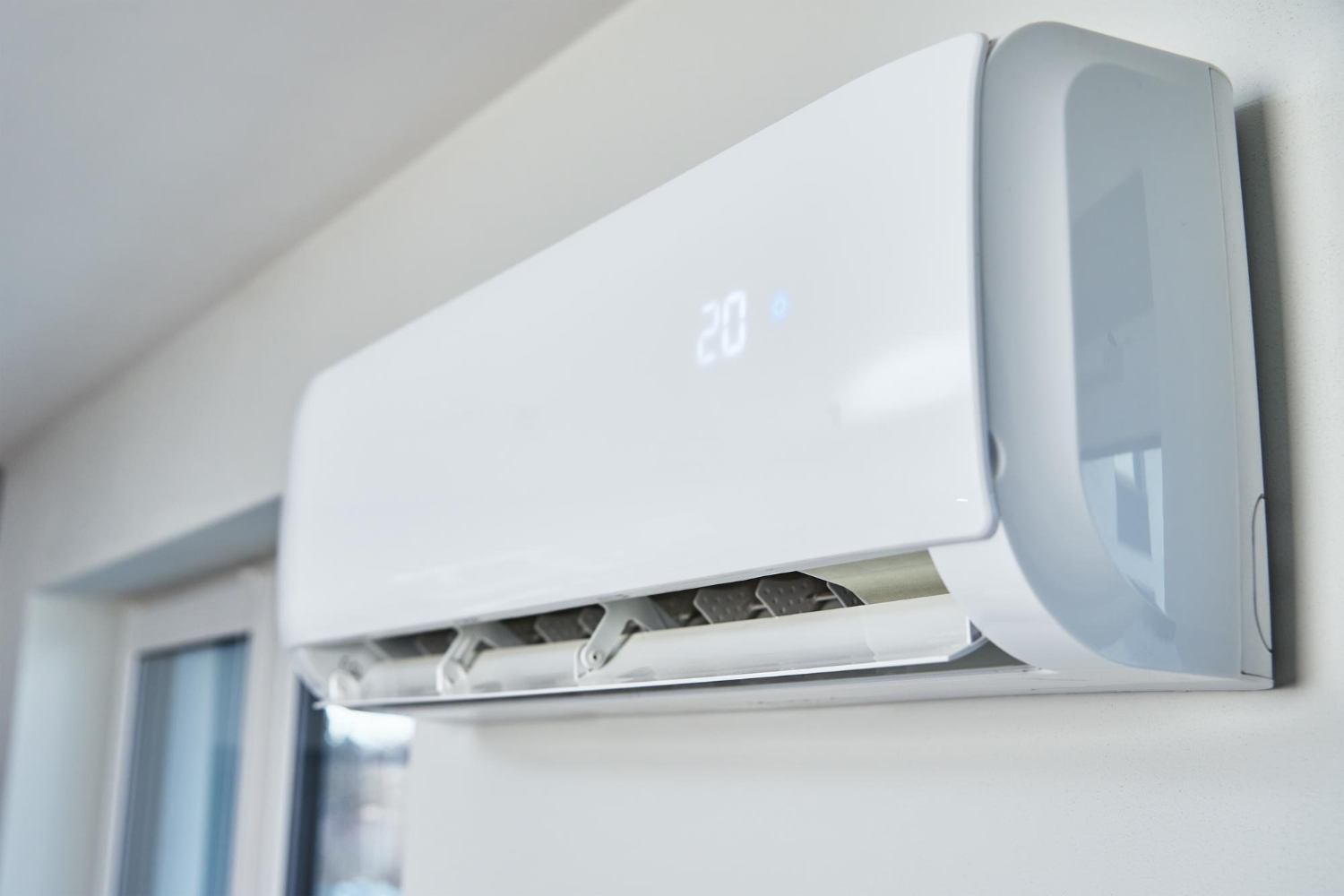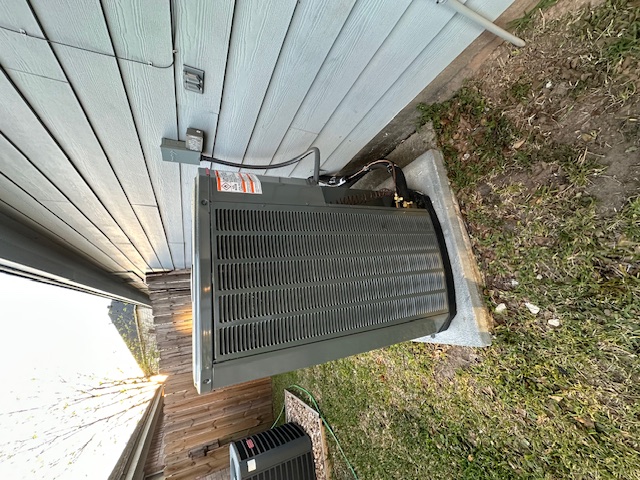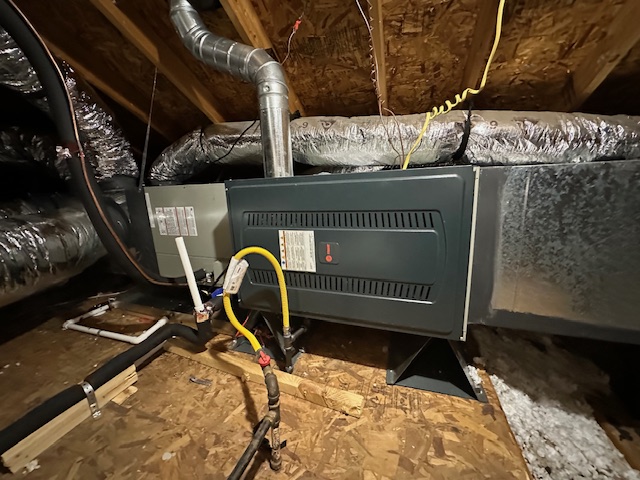The air inside homes can be two to five times more polluted than outdoor air, making indoor air quality a serious health concern for families everywhere. Poor air quality leads to headaches, allergies, breathing problems, and long-term health issues that many people don't realize come from their own homes.
HVAC systems offer powerful solutions to clean indoor air through advanced filtration, proper ventilation, and air purification technologies that remove pollutants, allergens, and harmful particles. Modern heating and cooling systems do much more than control temperature - they actively improve the air people breathe every day.
In this article, you’ll learn how HVAC air quality solutions—from filtration and ventilation to purification and smart humidity control—create cleaner, healthier indoor air.
Here’s what you need to know.
- How your HVAC system shapes indoor air quality
- Proven solutions that make the biggest difference
- Testing, insights, and what your numbers really mean
- Do you need an air purifier if you already have HVAC
- A practical plan for cleaner air at home
Keep reading! Understanding how HVAC systems work to clean air, which solutions provide the best results, and how to create a practical plan for healthier air helps homeowners make smart decisions about their family's health and comfort.
How your HVAC system shapes indoor air quality
Your HVAC system controls three main factors that determine what you breathe indoors: filtration removes particles and pollutants, ductwork design affects how contaminants spread, and humidity levels influence mold growth and allergen activity.
According to the U.S. EPA, pollutant concentrations indoors can be 2 to 5 times higher than outdoors, underscoring the need for robust HVAC air quality solutions that combine filtration, ventilation, and source control.
What good airflow and filtration actually remove
Proper HVAC filtration catches dust, pollen, pet dander, and other airborne particles before they circulate through your home. Standard filters remove particles between 3-10 microns in size.
Higher-rated filters capture smaller pollutants. MERV 8 filters catch dust mites and pollen. MERV 11 filters trap smoke and smog particles. MERV 13 filters remove bacteria and some viruses.
Good airflow helps filtration work better. When air moves at the right speed, filters have more time to capture particles. Slow airflow lets dust settle on surfaces instead of reaching the filter.
Common particles removed by HVAC filtration:
- Dust and dirt
- Pollen from trees and grass
- Pet hair and dander
- Mold spores
- Lint from clothing and fabric
Fresh air ventilation also reduces indoor pollutants by bringing in outside air. Most HVAC systems mix outdoor air with indoor air to dilute contaminants like cooking odors and cleaning chemicals.
When poor duct design spreads dust and odors
Leaky ducts pull in dust from attics, basements, and wall cavities. These particles then spread throughout your home instead of being filtered out. Even small leaks can bring in significant amounts of dust and allergens.
Poorly sealed return ducts are especially problematic. They create negative pressure that draws in unfiltered air from crawl spaces and other areas.
Signs of ductwork problems:
- Visible dust around air vents
- Musty odors when system runs
- Different temperatures in various rooms
- Higher than normal energy bills
Dirty ducts also harbor mold, bacteria, and pest droppings. When the system runs, these contaminants blow directly into living spaces. Regular duct cleaning every 3-5 years helps prevent this buildup.
Oversized ducts reduce air velocity and filtration effectiveness. Undersized ducts create turbulence that stirs up settled particles. Proper duct sizing ensures smooth airflow and better particle removal.
Simple humidity targets that curb mold and allergens
The U.S. EPA recommends keeping indoor relative humidity below 60%, ideally between 30% and 50%, to limit mold growth and dust mite activity, making humidity control a core IAQ strategy.
Indoor humidity between 30-50% prevents most mold growth and reduces dust mite populations. AC systems naturally remove moisture as they cool air. Heating systems can make air too dry without added humidity.
High humidity above 60% encourages mold growth in ducts, on coils, and around vents. This mold then spreads spores throughout your home when the system operates.
Low humidity below 30% dries out nasal passages and makes you more sensitive to airborne particles. It also increases static electricity that attracts dust to surfaces.
Humidity control methods:
- Whole-house dehumidifiers for excess moisture
- Humidifiers for dry winter air
- Proper AC sizing to remove moisture effectively
- Exhaust fans in bathrooms and kitchens
Dirty evaporator coils can't remove humidity properly. When coils stay wet, they grow mold and bacteria. Regular coil cleaning maintains proper moisture control and prevents microbial growth.
Smart thermostats with humidity sensors help maintain ideal levels automatically. They adjust system operation to keep humidity in the target range year-round.
Proven solutions that make the biggest difference
Three core upgrades transform indoor air quality more than any other changes. Advanced filtration systems catch more particles while maintaining proper airflow, whole-home purifiers work better than portable units, and smart ventilation systems bring fresh air inside without wasting energy.
Filter upgrades that balance clean air with strong airflow
MERV ratings tell homeowners which filters work best for their needs. MERV 8 filters catch dust and pollen without blocking airflow in most systems. MERV 11 filters remove pet dander and smaller particles but may reduce airflow in older units.
MERV 13 filters capture bacteria and smoke particles. These work well in newer systems with strong blowers. MERV 16 filters catch viruses but often slow airflow too much for home systems.
Filter comparison:
- MERV 8: Basic dust and pollen removal
- MERV 11: Pet dander and mold spores
- MERV 13: Bacteria and fine particles
- MERV 16: Hospital-grade filtration
Pleated filters last longer than flat filters. They have more surface area to catch particles. Most homes should change filters every 1-3 months depending on pets, allergies, and local air quality.
Whole home purifiers and when they beat plug in units
Whole-home air purifiers connect to existing HVAC systems. They clean all the air in a house instead of just one room. These units cost more upfront but work better than multiple portable units.
UV lights kill germs and mold in air ducts. They install near the air handler and run when the system operates. These lights work best with good filtration systems.
Ion generators attach to ductwork and charge particles in the air. Charged particles stick together and get caught in filters more easily. Some people worry about ozone from these units.
When whole-home beats portable:
- Houses over 1,500 square feet
- Multiple family members with allergies
- Pets throughout the home
- Open floor plans
Portable units work well for bedrooms or single problem areas. They cost less and let people target specific rooms.
Ventilation add ons that bring in fresh air without waste
Energy recovery ventilators (ERVs) bring fresh air inside while keeping heating and cooling costs low. They transfer heat and moisture between incoming and outgoing air. This prevents waste during extreme weather.
Heat recovery ventilators (HRVs) work like ERVs but only transfer heat. They work better in dry climates where moisture control matters less. Both systems run independently of heating and cooling equipment.
ERV vs HRV comparison:
- ERV: Transfers heat and moisture, better for humid areas
- HRV: Transfers heat only, better for dry climates
Demand-controlled ventilation uses sensors to bring in fresh air only when needed. These systems check CO2 levels and occupancy. They save energy by not over-ventilating empty spaces.
Smart ventilation systems connect to home automation. They adjust fresh air based on outdoor air quality reports. Some pause ventilation during high pollution days or pollen alerts.
Testing, insights, and what your numbers really mean
Getting your indoor air tested gives you hard data about what you're breathing, while understanding the costs and timing helps you make smart decisions about when professional testing makes sense.
Air quality testing services and the metrics to watch
Air quality testing services measure several key pollutants that affect your health and comfort. Particulate matter (PM2.5 and PM10) shows dust, pollen, and other tiny particles in the air.
Volatile organic compounds (VOCs) include chemicals from cleaning products, furniture, and building materials. Normal levels stay below 0.5 mg/m³ for most VOCs.
Carbon dioxide levels tell you about ventilation. Readings above 1,000 ppm mean your HVAC system isn't bringing in enough fresh air.
Humidity levels should stay between 30-50%. High humidity leads to mold growth, while low humidity causes dry skin and respiratory problems.
Professional services also test for radon, formaldehyde, and specific allergens. They use calibrated equipment that gives more accurate results than basic home monitors.
Most tests include a visual inspection of your HVAC system. Technicians check air filters, ductwork, and ventilation to find problems that affect air quality.
How much an air quality test costs and what affects price
Basic air quality testing costs $300-600 for a standard home. This includes testing for common pollutants like VOCs, particulate matter, and humidity levels.
Comprehensive testing runs $800-1,500 and covers more pollutants including mold spores, bacteria, and specific chemicals. Large homes or commercial spaces cost more due to multiple testing locations.
Several factors affect the final price:
- Home size - Larger spaces need more test points
- Number of pollutants tested - Each additional test adds $50-150
- Lab analysis requirements - Detailed reports cost more than basic readings
- Geographic location - Urban areas typically charge higher rates
Rush testing adds 25-50% to the base cost. Some companies offer package deals that include both testing and HVAC inspection services.
When an inspection is worth it and what to expect
Schedule air quality testing when you notice persistent health symptoms like headaches, allergies, or breathing problems that improve when you leave home.
New construction or major renovations often require testing. Building materials release chemicals for months after installation.
Testing makes sense if your home has moisture problems, musty odors, or visible mold. It's also smart before buying a house or after HVAC system changes.
The inspection process takes 2-4 hours depending on home size. Technicians place monitors in different rooms and collect air samples.
You'll get results within 3-7 business days. Reports show pollutant levels compared to health standards and include specific recommendations for improvement.
Most companies provide follow-up consultations to explain results and suggest HVAC modifications or other solutions to fix air quality problems.
Do you need an air purifier if you already have HVAC
Your HVAC system provides basic air filtration, but standard filters miss many small particles that affect indoor air quality. Adding specialized purification technology and maintaining proper filter schedules can create cleaner air throughout your home.
What your AC does well and where it falls short
HVAC systems excel at moving air and catching large particles like dust and lint. Standard filters remove debris that could damage equipment and keep air flowing smoothly.
What HVAC filters catch well:
- Dust and dirt particles
- Pet hair and larger allergens
- Lint from clothing
- Visible debris
Most HVAC filters have low MERV ratings between 1-4. These basic filters miss smaller particles that cause health problems.
What gets through standard filters:
- Pollen and fine allergens
- Bacteria and viruses
- Smoke particles
- Chemical fumes
- Mold spores
AC air quality depends heavily on filter quality. Higher MERV filters (8-13) catch more particles but may reduce airflow if your system cannot handle them.
Many people with allergies notice symptoms even with working HVAC systems. This happens because standard filters allow small allergens to circulate freely.
Pairing filters with UV or electronic options for faster gains
UV lights and electronic air cleaners work alongside regular filters to target particles that slip through. These systems install directly in your HVAC ductwork.
UV purifiers kill bacteria, viruses, and mold using ultraviolet light. They work best in the return air duct before your air handler. UV lights need annual bulb replacement but require little other maintenance.
Electronic air cleaners use electrical charges to trap particles. They catch smaller particles than standard filters and wash clean instead of needing replacement.
Many HVAC technicians recommend combining higher MERV filters with UV or electronic systems. This approach catches large particles in filters while destroying smaller contaminants.
Installation happens in your return air ductwork. Most systems work with central air conditioning and heating equipment.
The combination approach costs more upfront but provides whole-house coverage. You get cleaner air from every vent instead of just one room.
Maintenance habits that keep results consistent year round
Regular filter changes keep your air purification working properly. Most filters need replacement every 1-3 months depending on usage and home conditions.
Check filters monthly during heavy use seasons. Dirty filters reduce airflow and let more particles through.
Key maintenance tasks:
- Replace filters on schedule
- Clean electronic components quarterly
- Replace UV bulbs annually
- Check ductwork for leaks
Homes with pets or smokers need more frequent filter changes. Allergy sufferers should use higher MERV filters and change them more often.
UV bulbs lose effectiveness over time even when they still produce light. Mark replacement dates on your calendar to maintain germ-killing power.
Electronic cleaners need washing every few months. Turn off power before removing and cleaning components.
Professional HVAC maintenance twice yearly ensures all air quality systems work together properly. Technicians check airflow, clean components, and spot problems early.
A practical plan for cleaner air at home
Taking control of indoor air quality requires a systematic approach that starts with immediate actions and builds into long-term maintenance. The most effective strategy combines quick diagnostic checks, regular HVAC maintenance, and targeted upgrades based on actual symptoms rather than marketing claims.
Quick checks you can do this week for measurable gains
Start by replacing your HVAC filter if it has been more than three months. A dirty filter restricts airflow and allows particles to circulate through your home.
Check all air vents and remove any dust buildup or blockages. Furniture and curtains often block return vents without homeowners noticing.
Immediate actions to take:
- Run bathroom and kitchen exhaust fans during and 30 minutes after use
- Open windows for 5-10 minutes daily when outdoor air quality is good
- Remove shoes at the door to reduce tracked-in particles
- Vacuum with a HEPA filter vacuum twice per week
Purchase an air quality monitor to measure particle levels in your main living areas. Place it away from kitchens and bathrooms for accurate readings.
Test different locations in your home. Basements and rooms with poor ventilation often show higher particle counts.
Key measurements to track:
- PM2.5 particles (should be below 12 μg/m³)
- Humidity levels (keep between 30-50%)
- Temperature consistency between rooms
Seasonal service steps that prevent hidden IAQ issues
Schedule professional HVAC maintenance twice yearly - once before heating season and once before cooling season. Technicians can identify problems before they affect air quality.
Spring maintenance checklist:
- Clean evaporator coils to prevent mold growth
- Check condensate drain for clogs
- Inspect ductwork for leaks or damage
- Test airflow at each vent
Fall preparation tasks:
- Clean or replace filters in all HVAC equipment
- Check heat exchanger for cracks
- Seal air leaks around windows and doors
- Clean dryer vents and exhaust fans
Change filters more frequently during high-pollen seasons. Homes with pets or smokers need monthly filter changes instead of quarterly.
Clean your home's air ducts every 3-5 years if you notice dust buildup or musty odors. Focus on return air ducts where most contamination occurs.
How to choose upgrades based on symptoms, not hype
Match your upgrade choices to specific problems you can measure or observe. This prevents wasting money on unnecessary equipment.
Symptom-based upgrade guide:
Problem
Likely cause
Best solution
Dust on surfaces weekly
Poor filtration
Upgrade to MERV 11-13 filter
Stuffy air, headaches
Inadequate ventilation
Install ERV or HRV system
Allergy symptoms
Airborne particles
Add whole-house air purifier
Dry skin, static
Low humidity
Install whole-house humidifier
Musty odors
High humidity/mold
Add dehumidifier, check for leaks
Focus on whole-house solutions connected to your HVAC system rather than portable units. These provide consistent treatment for your entire home.
Avoid ozone generators, ionizers, and UV lights unless recommended by an HVAC professional. Many produce harmful byproducts or provide minimal benefits.
Start with the most cost-effective upgrades first. Better filters and proper maintenance solve most air quality issues before expensive equipment becomes necessary.
Conclusion
HVAC systems serve as powerful tools for maintaining clean indoor air. They filter pollutants, control humidity levels, and ensure proper air circulation throughout homes and buildings.
Regular maintenance keeps these systems working effectively. Homeowners should replace air filters every 1-3 months and schedule professional inspections annually.
Advanced solutions like UV lights and air purifiers can enhance standard HVAC performance. These additions target specific pollutants that basic filtration might miss.
Investing in quality HVAC air solutions protects occupant health and improves comfort levels. Clean air reduces respiratory issues and creates better living environments.
Professional air quality testing helps identify specific problems in individual homes. This testing guides homeowners toward the most effective solutions for their situations.
Modern HVAC technology offers numerous options for improving indoor air quality. From basic filtration upgrades to complete system overhauls, solutions exist for every budget and need.
Taking action on air quality improvements benefits everyone in the building. Better air quality leads to improved health outcomes and greater overall satisfaction with indoor spaces.
Schedule professional air quality testing and an HVAC IAQ assessment today to get a clear plan, pricing, and upgrades that reduce allergens, odors, and humidity across your whole home.











